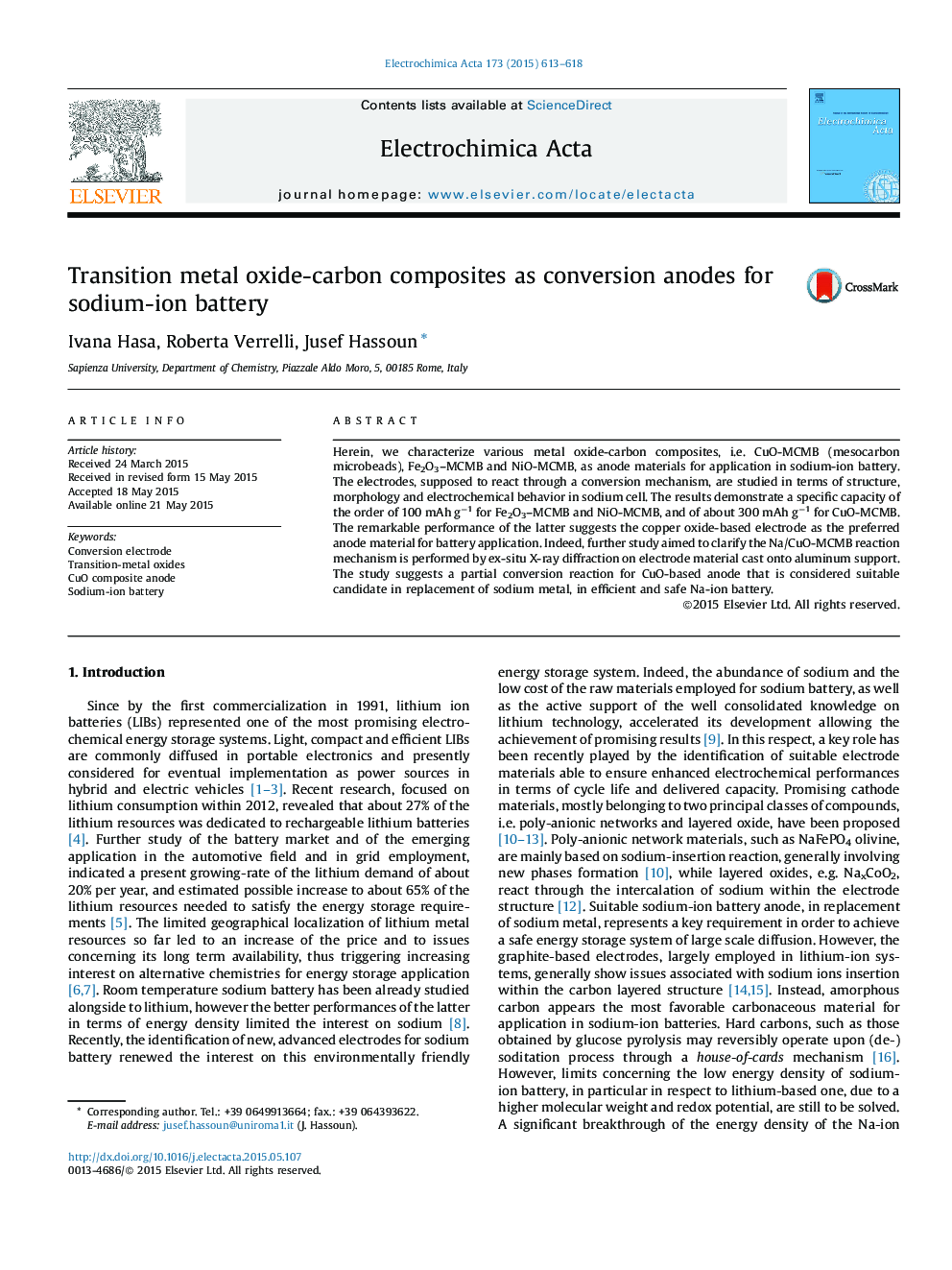| Article ID | Journal | Published Year | Pages | File Type |
|---|---|---|---|---|
| 183827 | Electrochimica Acta | 2015 | 6 Pages |
Herein, we characterize various metal oxide-carbon composites, i.e. CuO-MCMB (mesocarbon microbeads), Fe2O3–MCMB and NiO-MCMB, as anode materials for application in sodium-ion battery. The electrodes, supposed to react through a conversion mechanism, are studied in terms of structure, morphology and electrochemical behavior in sodium cell. The results demonstrate a specific capacity of the order of 100 mAh g−1 for Fe2O3–MCMB and NiO-MCMB, and of about 300 mAh g−1 for CuO-MCMB. The remarkable performance of the latter suggests the copper oxide-based electrode as the preferred anode material for battery application. Indeed, further study aimed to clarify the Na/CuO-MCMB reaction mechanism is performed by ex-situ X-ray diffraction on electrode material cast onto aluminum support. The study suggests a partial conversion reaction for CuO-based anode that is considered suitable candidate in replacement of sodium metal, in efficient and safe Na-ion battery.
